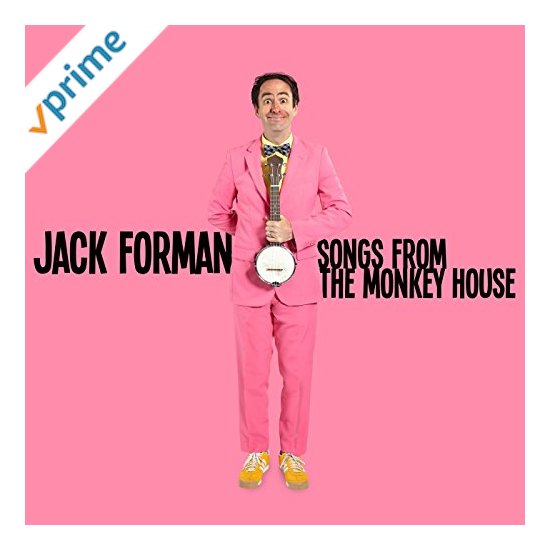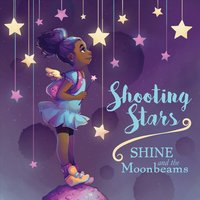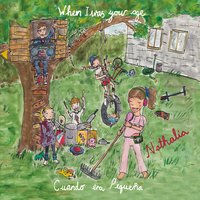In a world where it seems music either gets pushed to the forefront for the masses or the background as wallpaper, it's pretty easy to lose sight of the weirdos -- which is, anyone who's making music who's not shooting for superstardom or complete anonymity.
I hesitate to call the following albums from the past 2-3 months the product of weirdos -- those artists I've met personally certainly wouldn't fall in that category -- but to the extent that these aren't albums aiming for the Billboard Top 40 or your local Pottery Barn soundtrack, they are a little weird. I'm not sure that there would be many kids who would like all of these albums equally, but there are probably more than a few families in which at least one of the clan would find something of entertainment value within. There are some other albums out this fall that have given me joy, but these are some of the highlights, as well as being music I haven't really covered much, if at all.
Dreamers - Lard Dog and the Band of Shy: That cover art, with its angular illustrations suggesting a family-friendly Picasso, nails the overall Lard Dog attitude. The music itself, swing and Tin Pan Alley-influenced, seems beamed in from another generation -- this is an album that features a song called "Who's Your Favorite Beatle?." Meanwhile the lyrics at times seem beamed in from another planet altogether, either because they're non sequiturs or literally in some made-up language (lookin' at you, "The Kimbaloo.") The second track, "I Like," expresses a variety of the singers' favorite things, including Stravinsky and Mork from Ork, which would scan poorly if sung in "My Favorite Things," but fits the attitude here just right. There's a kindness here that is very endearing.
Endangered Species Project - Fire Dog: Mark Pagano and his St. Louis, Missouri-based band started off making music for adults, but is spending more time these days making music for kids and musically, there's no difference between this album and one made for the older set. (Heck, kids'll love the guitar riff on "Kingdom Phylum" not knowing that it's ripped off from Nirvana's "Smells Like Teen Spirit." Not that I'm complaining.) This is a concept album about, unsurprisingly, endangered animals. Where I think the album succeeds more than most similar "nature-inspired" albums for kids is twofold -- first, it's far more focused on endangered animals, with a song about the federal Endangered Species Act, songs about habitat and what it means to be endangered, and songs about some animals themselves. It's a coherent whole. Second, and I admit this is totally personal taste, I dig the indie-rock vibe. (You or your kids may differ. Or may rock out.)
Songs from the Monkey House - Jack Forman: The bassist from Seattle trio Recess Monkey (and afternoon DJ on Sirius-XM's Live from the Monkey House call-in show) releases his first album through Amazon Music and pretty much goes the full "Weird" Al on this one. These are silly songs for the 7-year-old (and possibly 37-year-old) goofball in your life, with drooling dogs ("Dog Park"), Star Wars ("Yodeling Yoda"), and Charlie and the Chocolate Factory ("Candy Tour") serving as some inspiration. There's an amusing song ("No Name") about a band that has everything but a name in which the denouement from the punchline is better than the punchline itself. Not that Recess Monkey ever made its name based on its heartfelt odes to family life, but Forman dials the comedic id way up here. If someone in your family has ever entertained the notion of buying a rubber chicken (or is amused by said notion), this is for you.
Gonna Be Great - David Tobocman: Tobocman has a slightly rarer niche in kids music -- sophisticated AM-radio pop for more a slightly younger set. (After all, his first album, Very Helpful Songs, was explicitly created to help teach kids the ways of the preschool world, a description that doesn't adequately convey how pleasant of a listen it was.) There's a gentleness and quiet optimism on this new album, and while there are a few "helpful" songs -- the touched-by-southern rocker "Keep Your Hands To Yourself," the '70s funk "Don't Put Money In Your Mouth" -- the songs that'll probably stick to you and your 6-year-old's brain will be the more story-focused "Dalia" (a figure-skating elephant) or "The Cookie Factory" (yes, a song about bakers, but more subtly, an ode to the working man and woman). And, hey, if your six-year-old doesn't appreciate the Shakespeare (or Beverly Hillbillies) references in "Something Called King Lear," just give her time.
Imaginary Universe - Johnny Bregar: I've long been surprised that the Seattle-based Bregar hasn't received more attention for his crafty and well-crafted roots-rock for kids. I suspect that his under-the-radar impression is due to his comparatively low output (that link above is to his last album, released in 2012) and minimal touring. It's really too bad, though, because he's particularly good at striking the balance between kid-focused but not "kiddie" lyrical approaches, heartfelt but not sappy. In any case, it's so good to have Bregar and his voice back to tickle your family's ears on his latest album. You can listen to the entire album on the standard digital outlets as well as Bandcamp, and if you just have time for a couple tracks, give his take on the traditional "Ain't No Bugs" and the rocker "Sleepy Heads" a try. (If I told you which song the latter reminded me of, it'd give away the whole joyful final act reveal of the song.)






























